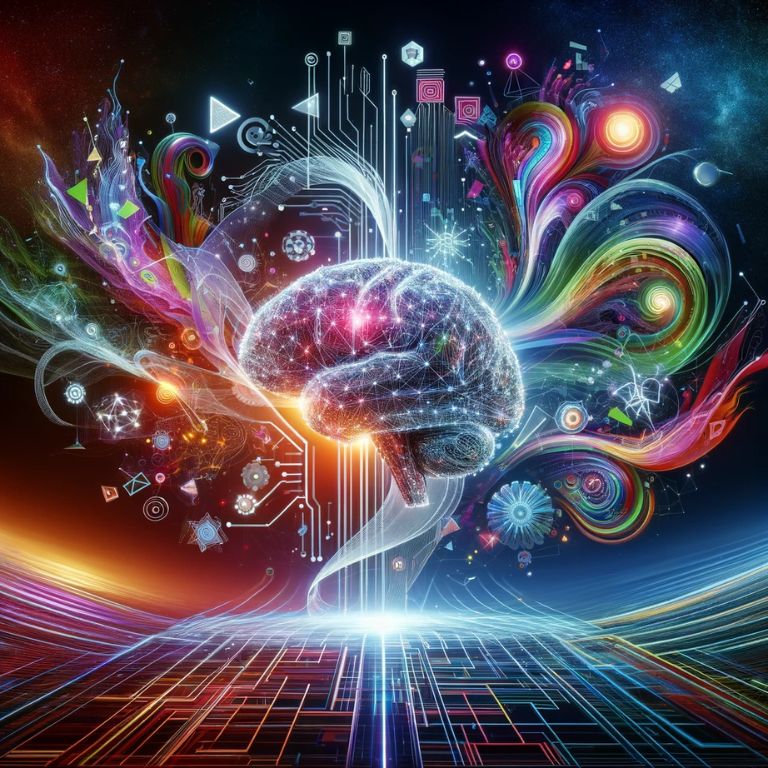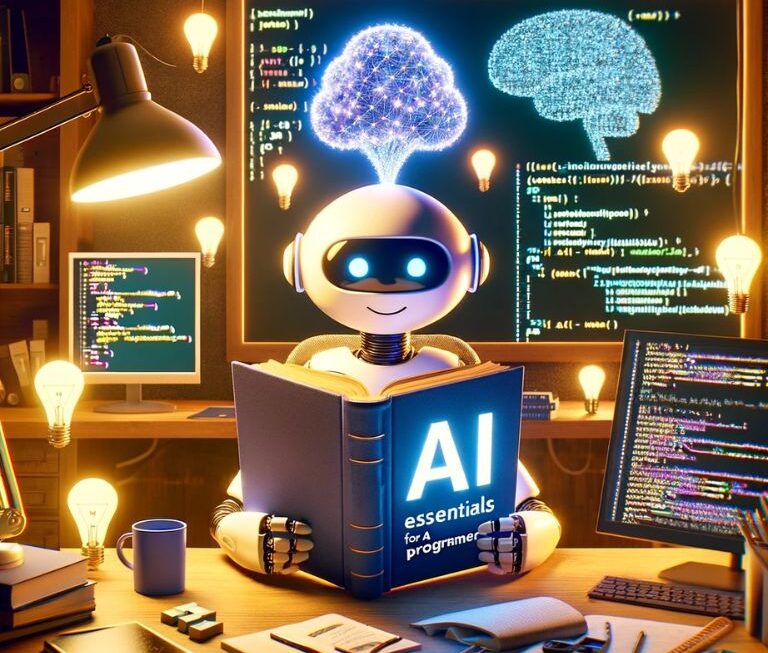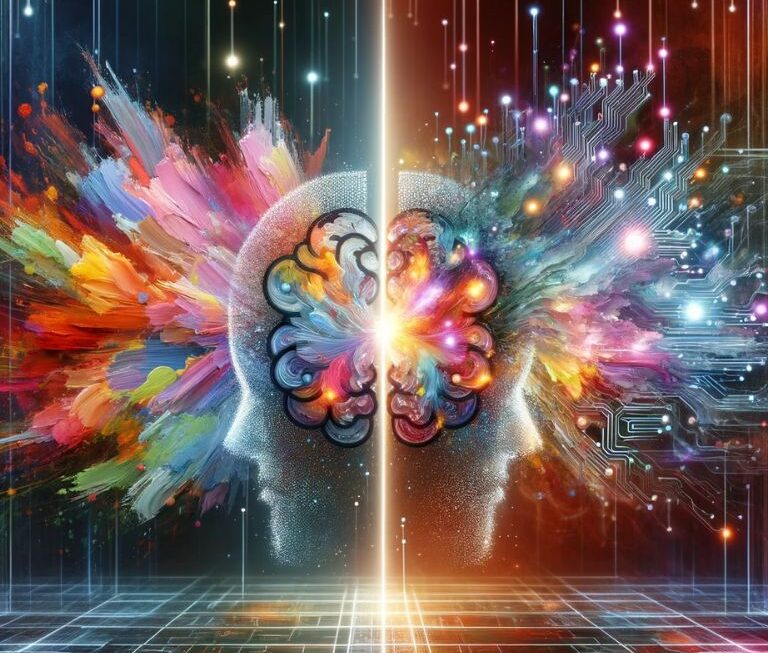Generative AI is revolutionizing design by automating creative processes. This technology enables designers to generate innovative solutions, streamline workflows, and unlock new levels of efficiency and creativity.
The Emergence of a New Era in Design
In the realm of design, a revolutionary wave is sweeping across industries, powered by generative Artificial Intelligence (AI). This groundbreaking technology is not just a tool but a transformative force, redefining the boundaries of creativity and innovation in design fields such as architecture and graphic design.
What is Generative AI?
Generative AI refers to a class of artificial intelligence that can generate new content, designs, or ideas based on learning from a set of data. It encompasses various technologies, including machine learning, deep learning, and neural networks. Unlike traditional AI, which is programmed to follow specific rules, generative AI learns from existing patterns and data to create novel and original outputs.
A Brief History of AI in Design
The integration of AI in design is not entirely new. For decades, designers and engineers have used computer-aided design (CAD) tools to aid in creating and visualizing their work. However, the advent of generative AI marks a paradigm shift. Early instances of AI in design were primarily about automating tasks and improving efficiency. Today’s generative AI, however, collaborates with designers, offering them an expanded creative palette. It’s about augmenting the human capacity for innovation, not just simplifying the design process.
| Era | Technology | Characteristics |
| 1980s-1990s | Basic CAD Tools | Task automation, basic design functions |
| 2000s | Advanced CAD and 3D Modeling | Enhanced visualization, complex designs |
| 2010s-Present | Generative AI | Creative collaboration, innovative solutions |
The Significance of Generative AI in Modern Design
Generative AI revolutionizes design by rapidly generating diverse possibilities, addressing challenges, and expanding creativity. In architecture, it combines environmental and structural factors with aesthetics for innovative designs. In graphic design, it produces distinctive visuals, patterns, and layouts for artistic exploration.
Embracing a Collaborative Future
As we delve deeper into the age of generative AI, the relationship between human creativity and machine intelligence becomes increasingly symbiotic. Designers are learning to harness the power of AI not as a replacement for human ingenuity but as a partner in the creative process. This collaboration is opening up new horizons in design, leading to solutions and creations that were once thought impossible.
The Intersection of AI and Creativity
The convergence of AI and creativity is reshaping industries. AI-driven tools assist in music composition, art generation, and content creation, offering innovative possibilities and redefining creative boundaries.
Examining How AI is Redefining Creativity in Design
The integration of Artificial Intelligence in the creative process is redefining the very essence of design. This fusion is not about AI taking over the creative roles but about enhancing and expanding the creative capabilities of human designers. By leveraging AI’s ability to process and analyze vast amounts of data, designers can explore new forms and patterns, pushing the boundaries of traditional creativity. AI algorithms can suggest variations and alternatives that might not be immediately obvious to the human mind, thus enabling a more exploratory and innovative approach to design.
Creative Projects Enhanced by AI
- Architectural Innovation with AI: Zaha Hadid Architects employed AI in designing the Beijing Daxing International Airport. The AI algorithms assisted in optimizing the spatial layout to improve passenger flow, creating a more efficient and aesthetically pleasing design.
- AI-Driven Fashion Design: Fashion brand Tommy Hilfiger used AI to analyze current fashion trends and customer preferences, leading to the creation of a more targeted and successful clothing line.
- Graphic Design Breakthroughs: Adobe’s ‘Sensei’ is an AI tool that has revolutionized graphic design. It assists designers in image editing by suggesting enhancements and automations, thereby speeding up the creative process and allowing designers to focus on more complex aspects of their projects.
- Generative Art: Artists like Refik Anadol use machine learning algorithms to create stunning visual experiences.
- Innovative Product Design: Autodesk’s generative design software has been pivotal in creating efficient and optimized product designs.
Generative AI in Architecture
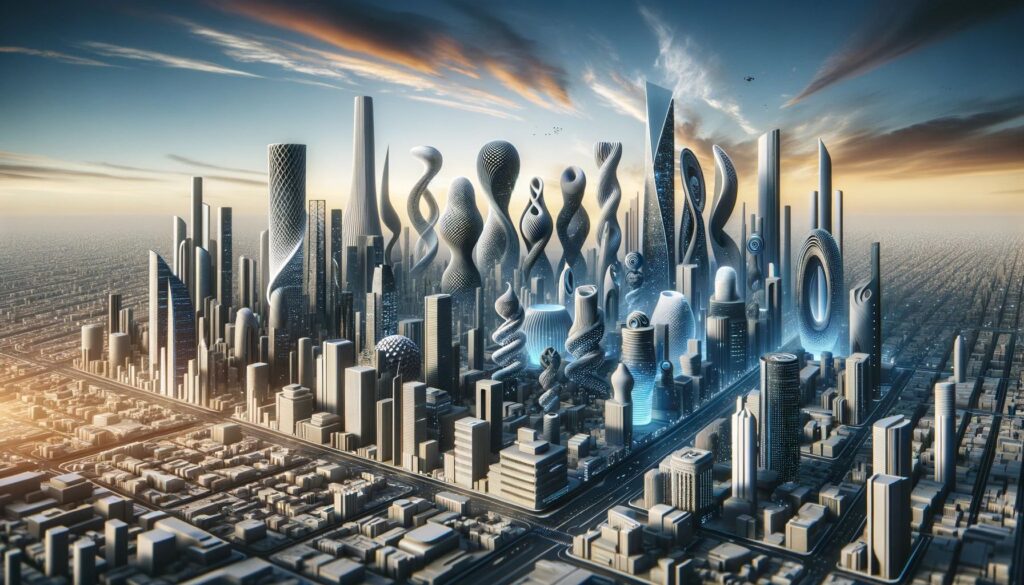
Innovative Uses of AI in Architectural Design
- Environmental Optimization: AI designs energy-efficient buildings based on climate data.
- Structural Efficiency: AI analyzes and optimizes structural designs, reducing costs.
- Urban Planning with AI: AI simulates urban scenarios for sustainable planning.
- Code Compliance Automation: AI ensures designs meet local codes quickly.
- Personalized Design: AI tailors designs to individual client preferences.
How AI is Transforming Traditional Architectural Processes
Generative AI is revolutionizing architectural design, departing from traditional linear methods. It expands possibilities by processing data and running simulations, providing valuable insights at every design stage. This evolution makes architecture more efficient, cost-effective, and responsive to various needs. AI is not merely a tool but a fundamental aspect shaping modern architectural conception and realization.
Revolution in Graphic Design with AI
AI is revolutionizing graphic design, automating tasks, enhancing creativity, and streamlining workflows. This transformative technology empowers designers to push creative boundaries and deliver stunning visuals more efficiently.
The Role of Generative AI in Modern Graphic Design
Generative AI is reshaping the graphic design landscape, where technology and creativity converge in innovative ways. It acts as a potent tool for designers, offering novel approaches to ideation, editing, and concept visualization. AI algorithms within graphic design can assess prevailing design trends, propose color palettes, layouts, and even produce complete visual compositions. This technology empowers designers to explore various styles and possibilities, pushing the limits of conventional design. AI’s ability to handle repetitive and time-consuming tasks enables graphic designers to dedicate more attention to the creative dimensions of their projects, thereby enhancing the overall quality and ingenuity of their work.
Examples of AI-driven Graphic Design Projects
- Logo Design Automation: Tools like Looka and Tailor Brands use AI to create custom logos. By analyzing user inputs about style preferences and brand identity, these tools generate unique logo designs in seconds, a process that traditionally could take hours or days.
- AI in Typography: FontJoy and DeepFont are AI applications that assist in selecting and generating font pairings, simplifying one of the most intricate aspects of graphic design.
- Automated Content Creation: Platforms like Canva utilize AI to suggest design templates and layouts based on the content type and user preferences, streamlining the creation of visually appealing content for social media, presentations, and more.
- Interactive Web Design: AI tools are being used to create dynamic and responsive web designs that adapt to user behavior and preferences, offering a personalized web browsing experience.
- AI-Powered Image Editing: Adobe Photoshop’s AI-driven features, such as Content-Aware Fill, enable designers to effortlessly edit and manipulate images, dramatically reducing the time and effort required for complex edits.
Enhancing Creativity Through Machine Learning
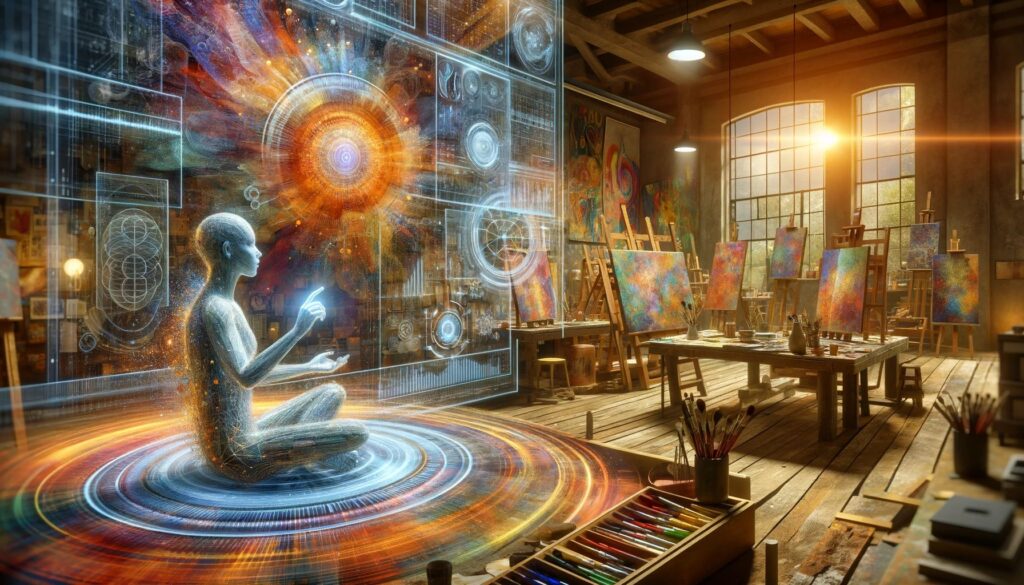
Deep Dive into Machine Learning Algorithms in Design
Machine Learning (ML), a core element of generative AI, plays a vital role in the design field. It involves training algorithms to recognize patterns, make decisions, and generate outputs based on data inputs. In design, ML processes vast amounts of information, from historical design trends to material and environmental data. ML assists in tasks like pattern recognition, prediction, and creative generation. For instance, it can analyze architectural styles to suggest innovative designs or recommend visually appealing graphics based on trends and user data. This data-driven approach enhances creativity and leads to more informed design solutions.
The Synergy between Human Designers and AI Tools
The partnership between human designers and AI tools embodies a unique synergy. AI processes and analyzes data at an unprecedented scale, while human designers contribute creativity, context, and emotional intelligence. Together, they create technically sound and aesthetically compelling designs, often achieving greater innovation than either could alone. This synergy augments the designer’s role, with AI acting as a creative partner, shaping a new era in design where human creativity and machine intelligence yield groundbreaking solutions.
Challenges and Ethical Considerations
Addressing challenges and ethical considerations in AI adoption is crucial. Issues like data privacy, bias, and job displacement need careful navigation to ensure responsible and equitable AI integration.
Addressing the Challenges Faced in Integrating AI into Design
- Data Privacy and Security: Design projects often involve sensitive client information and proprietary designs. Ensuring data security and privacy when using AI tools is a significant challenge. Design firms must implement robust data protection measures.
- Algorithm Bias: AI algorithms can inherit biases present in their training data, potentially leading to biased design recommendations. Overcoming algorithmic bias and ensuring fair and inclusive design outcomes is a persistent challenge.
- Human-Machine Collaboration: Striking the right balance between human creativity and AI assistance can be challenging. Designers may feel apprehensive about ceding too much control to AI or, conversely, underutilizing its potential.
- Complex Learning Curve: Learning to use AI tools effectively can be time-consuming, and not all designers may have the necessary skills. Bridging the knowledge gap and fostering AI proficiency among design professionals is an ongoing challenge.
- Legal and Regulatory Frameworks: The legal landscape for AI in design is still evolving. Designers and firms must navigate evolving regulations and standards related to AI use in creative industries.
Ethical Implications and Responsible Use of AI in Design
The responsible use of AI in design is paramount. Designers and organizations must consider the following ethical principles:
- Transparency: Clear communication about the use of AI in design projects, including disclosing when AI algorithms have influenced the final outcome.
- Fairness: Mitigating bias and ensuring that AI-driven designs are inclusive and do not discriminate against any group or individual.
- Accountability: Designers should take responsibility for the final product, even when AI tools are involved. This includes addressing any unintended consequences.
- Informed Consent: Clients should be informed about AI’s role in their projects and provide consent for AI-driven design decisions.
- Data Ethics: Respect for data privacy and ethical data collection and usage are essential to maintain trust and integrity in design processes.
Conclusion: The Expanding Horizons of AI in Design
In the ever-evolving landscape of design, the role of generative AI promises to be transformative. As AI technologies continue to advance, they are poised to empower designers with unprecedented tools for innovation and efficiency. From personalized and eco-friendly designs to immersive virtual experiences, the future of design with AI holds limitless potential. AI-driven creativity tools will become integral to the design process, accelerating the generation of ideas and prototypes. Moreover, AI’s ability to optimize designs for sustainability and energy efficiency will contribute to a more environmentally conscious approach to design. In this future, designers will collaborate seamlessly with AI systems, resulting in a synergy that redefines the creative boundaries in the world of design.

